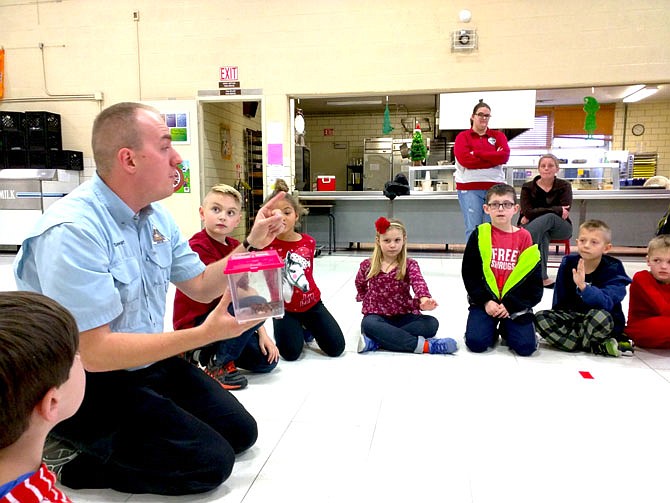Some scaley guests on Thursday afternoon slithered into Bush Elementary School.
Lucky members of the Junior Fulton Garden Club got to meet and learn about snakes during an after-school program. Sam Stewart, naturalist with the Missouri Department of Conservation at Runge Nature Center, brought knowledge, shed skins and several real, live snakes.
"I'd never bring a venomous snake to a school," Stewart reassured students as he got out the first snake, a small milk snake.
Students learned about how snakes aren't really the "biggest, baddest animals." Instead, they're clever predators who've developed a whole bag of tricks to defend against their own predators.
For example, some non-venomous snakes, like milk snakes, imitate the patterns of more dangerous snakes, like coral snakes (which don't live in Missouri).
But savvy humans can tell the difference.
Student Ava Vore explained if the snake has red next to yellow, it's a coral snake. Red next to black indicates a milk snake.
"I learned it from '5,000 Awesome Facts,'" Vore said proudly.
Students learned about camouflage from a large, lazy Great Plains rat snake, and about the special scale that forms a rattlesnake's rattle.
"I don't have a rattlesnake, but I have some of their rattles," Stewart said as he passed a specimen box around.
Junior Fulton Garden Club, a monthly after-school program run by the Fulton Garden Club, teaches students about the great outdoors and how they can care for it through hands-on activities and experiences.

